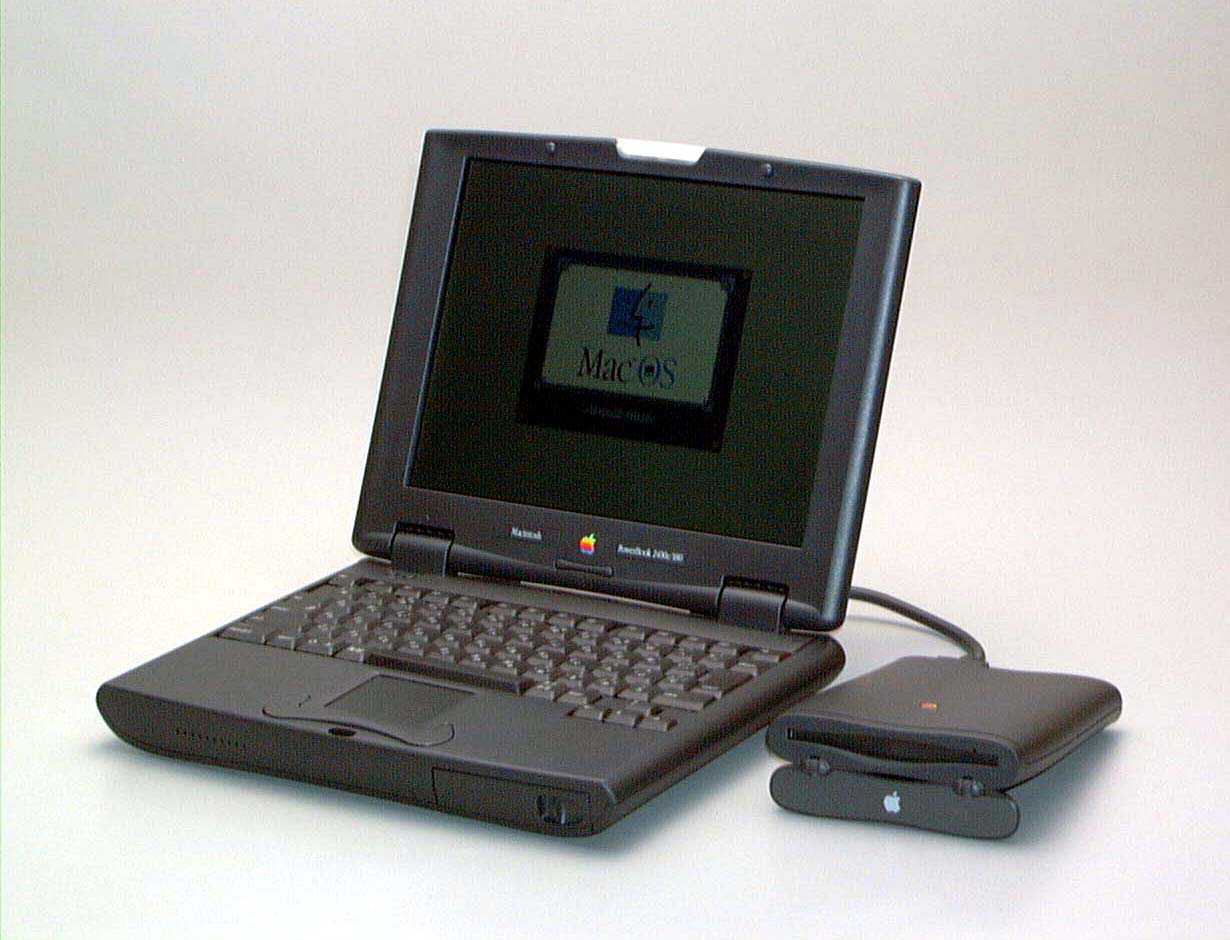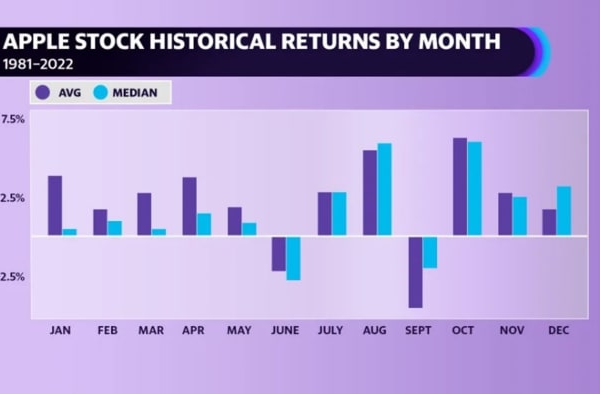
Launched on May 8, 1997, the Apple PowerBook 2400c represented a revolutionary shift in portable computing, carving out its niche as a lightweight laptop that weighed in at a mere 4.4 pounds. Lauded as the MacBook Air of its time, the PowerBook 2400c showcased an extraordinary blend of design and functionality, cleverly echoing the legacy of the original PowerBook 100. This device not only predicted the popularity of slim, speedy notebooks but also captured the hearts of many due to its impressive performance in a compact form. Despite being released over two decades ago, it remains a cult favorite among Apple enthusiasts and showcases the history of PowerBook’s evolution. The combination of powerful hardware and elegant design makes the PowerBook 2400c a defining example of the brand’s pioneering work that paved the way for modern Apple laptops like the MacBook Air.
The Apple PowerBook 2400c, often heralded as a precursor to modern lightweight laptops, made its debut as a game-changing portable computer during the late 1990s. This innovative subnotebook, which tipped the scales at just 4.4 pounds, embodies the shift towards thinner designs that has become the hallmark of contemporary laptops. Hailing from the storied lineage of Apple laptops, the PowerBook series continued to push the boundaries of what users could expect from portable technology. Drawing inspiration from its predecessors, the 2400c’s remarkable engineering not only bridged the gap between power and portability but also laid the groundwork for future innovations in the realm of slim devices. As we reflect on the history of PowerBook, it is clear that the achievements of the 2400c have had a lasting impact that still resonates in today’s sleek laptop designs.
The Rise of Lightweight Laptops: A Retrospective on the PowerBook 2400c
In the late 1990s, the Apple PowerBook 2400c represented a significant milestone in the evolution of portable computing. Launched on May 8, 1997, this subnotebook weighed only 4.4 pounds, positioning it as one of the first lightweight laptops to challenge the traditional laptop form factor. At a time when most portable computers were bulky, the 2400c’s sleek design not only reflected innovation but also a nod to Apple’s heritage, echoing the classic design elements of the original PowerBook 100. This introductory move into subnotebooks set the stage for future generations of portable laptops, laying the groundwork for devices like the MacBook Air, which embraced the lightweight design ethos pioneered by the PowerBook 2400c.
Despite its modest specifications by today’s standards, the PowerBook 2400c was remarkably powerful for its time. It was equipped with a 180 MHz PowerPC 603e processor, capable of competently handling standard business applications, which was a rarity among its contemporaries that often sacrificed performance for portability. By delivering such processing power in a lightweight chassis, the PowerBook 2400c not only delighted tech enthusiasts but also solidified Apple’s reputation for innovative engineering.
The practical design of the PowerBook 2400c offered a glimpse into the future of mobile computing, where performance and portability would become paramount. This pioneering device emerged at a time when personal computers were rapidly evolving, and as history shows, it was a precursor to the even lighter MacBook Air. The introduction of such a lightweight laptop resonated well, especially in markets like Japan, where compact devices were favored even before the trend caught on in the West. As a testament to its robust design, many enthusiasts continue to see the 2400c as a cult classic, celebrating its unique position in the annals of the history of PowerBook and its influence on future Apple laptops.
Performance Features of the PowerBook 2400c
The Apple PowerBook 2400c was more than just a featherweight in the laptop market; it boasted impressive specifications that appealed to an assortment of users. Its 800×600, 10.4-inch active matrix TFT display provided stunning visuals for its time, allowing users to interact with graphics that were better than many of its heavier competitors. With a 1.3GB IDE hard drive and expandable RAM that reached up to 48MB, the PowerBook 2400c was ideal for the business applications prevalent in the late 1990s, enabling users to multitask effectively on a portable device. Furthermore, the innovative PCI-based architecture derived from IBM equipped the 2400c to perform nearly on par with the more powerful PowerBook 3400c, which was dubbed ‘the fastest notebook computer in the world’.
Apple’s decision to utilize lightweight components without sacrificing too much performance made the PowerBook 2400c a compelling choice for those on the go. It came with a reliable lithium-ion battery capable of providing two to four hours of usage, an adequate lifespan for the users of that time. While it was a departure from some of the more traditional features like an integrated CD-ROM or floppy drive, the alternative of expandability made it a future-proof option. Users enjoyed various ports, including multiple PC Card slots, allowing upgrades and additional features to be integrated easily, prolonging the life of the laptop in an era of rapid technological advancement.
Port Selection and Expandability of the PowerBook 2400c
One of the standout features of the PowerBook 2400c was its impressive array of ports, designed to enhance connectivity and expandability. At a time when other laptops were becoming antiquated, the PowerBook 2400c offered a strategic advantage with its array of connections which included Apple Desktop Bus, serial ports, and audio connections. It also featured onboard Mini–15 display connectors, a testament to Apple’s forward-thinking approach to design. Moreover, with two Type I/II PC Card slots and an option to support a Type III card for even more expansion possibilities, the 2400c could easily adapt to user needs ranging from USB interfaces to wireless networking.
This level of expandability not only kept the PowerBook 2400c relevant far beyond its initial release but also ensured that it catered to the growing demands of technology users. As the digital landscape evolved with the advent of digital photography, wireless internet, and other advancements, the PowerBook’s design philosophy empowered users to upgrade and enhance their machines rather than replace them entirely. By allowing for this customization, Apple positioned the PowerBook 2400c as a long-term investment in productivity, something that many users appreciated, especially in regions like Japan where lightweight laptops found widespread favor.
The PowerBook 2400c in Historical Context
The history of PowerBook is marked by pivotal releases that have shaped the future of portable computing, with the PowerBook 2400c being a significant milestone in this narrative. Launched just as Apple was beginning to consolidate its offerings, the 2400c is often seen as Apple’s first serious foray into the realm of thin and light laptops. Its launch represented a departure from heavier, more cumbersome models that had dominated the market in previous years, and it paved the way for the electronics industry to start prioritizing lightweight components and designs. This strategic pivot towards subnotebooks would ultimately influence countless future models, including the highly successful MacBook lineup.
Notably, the impact of the PowerBook 2400c extended far beyond its specifications and immediate popularity. It helped define consumer expectations for what laptops should deliver, laying the groundwork for future Apple laptops that followed its ethos of design excellence and portability. The subnotebook’s aesthetic, functionality, and focus on user experience signified a shift in the market that led to increasing competition among manufacturers, forcing all major players to innovate continually. In doing so, the PowerBook 2400c not only holds a special place in Apple’s history but also serves as a critical reference point for anyone studying the evolution of lightweight laptops and their eventual transformation into everyday essentials.
Legacy of the PowerBook 2400c
While the PowerBook 2400c had a relatively short production run, its legacy continues to resonate in today’s computing world. It is often cited as one of the first lightweight laptops that meaningfully foretold the future of portable technology, demonstrating that performance could be achieved in an elegant, compact form factor. The cultural and technological implications of this device cannot be overstated, as it influenced both manufacturers and consumers in appreciating the importance of portability alongside computing power.
Years later, many enthusiasts and collectors still speak highly of the PowerBook 2400c, showcasing its enduring relevance among Apple laptops. This subnotebook serves as a reminder of the quality and vision that Apple was known for during its transformative years in the late 90s. With its unique design and functionality, the PowerBook 2400c remains not just a piece of technology history, but a beloved artifact in the story of Apple’s innovation narrative.
Challenges in the Design of the PowerBook 2400c
Creating the PowerBook 2400c was not without its challenges, particularly in balancing lightweight engineering with performance demands. Apple’s decision to launch this thin and light laptop meant sacrificing features that were considered standard at the time, including the CD-ROM and internal floppy drives. This strategic choice was necessary to maintain the desired slim profile but presented a trade-off that many users had to adapt to. Instead of integrating these drives, Apple provided external solutions, which could be seen as both innovative and limiting based on user needs.
Despite these challenges, the PowerBook 2400c achieved a unique status in the market through its exceptional design and innovative features. Apple was able to leverage its historical design language and merge it with cutting-edge technology, resulting in a device that, while sometimes lacking mainstream features, stood out for its compactness and potential for expandability. The compromises made during the design phase ultimately shaped the PowerBook 2400c into a legacy product that continues to be appreciated for its pioneering role in the history of lightweight laptops.
Steve Jobs and the Fate of the PowerBook 2400c
Despite its initial success, the fate of the PowerBook 2400c changed dramatically with the return of Steve Jobs to Apple in 1997. Just two months after the PowerBook 2400c was launched, Jobs took the reins as interim CEO and swiftly implemented a series of changes aimed at simplifying Apple’s product lines. The arrival of the PowerBook G3 series and the ultra-popular iMac meant tough decisions had to be made, and unfortunately, the PowerBook 2400c swiftly became a casualty of this strategic refocus. Within a year, the entire product line underwent a significant overhaul, and the 2400c was discontinued by March 1998.
This quick demise struck a chord with loyal users who admired the PowerBook 2400c’s innovation and performance. While the device was no longer in production, it established a loyal following, and many users expressed their disappointment as Jobs’ direction fundamentally altered the landscape of Apple laptops. The legacy of the PowerBook 2400c serves as a reminder that even the most innovative products can face tough decisions in rapidly evolving tech markets, especially when strategic leadership pivots target different consumer needs.
The Popularity of the PowerBook 2400c in Japan
The Apple PowerBook 2400c carved out a significant niche for itself in the Japanese market, where consumers had a growing preference for lightweight laptops long before this trend became evident in the Western world. Japanese users were quick to appreciate the subnotebook’s elegant design and portable size, incorporating it into their fast-paced lifestyles. The combination of portability and functionality resonated with students and business professionals alike, making the PowerBook 2400c a sought-after device in urban Japan.
The appreciation for the PowerBook 2400c in Japan underscored a cultural shift toward valuing lightweight computing devices, a trend that eventually spilled over into other markets. As Apple ventured into expansions targeted specifically at Japan, the 2400c’s success reinforced the company’s understanding of diverse consumer preferences, highlighting the importance of tailoring products to meet region-specific demands. This success story serves as a valuable lesson in the evolution of the laptop, illustrating how cultural preferences can influence technology adoption significantly.
The Technological Innovations of the PowerBook 2400c
The PowerBook 2400c was not just celebrated for its lightweight design; it also featured several technological innovations that marked a significant leap for portable computing. Among its most noteworthy attributes was the use of a 180 MHz PowerPC 603e processor, which, despite its size, offered robust performance that ranked it competitively against its contemporary rivals. The incorporation of PCI-based architecture enabled efficient processing capabilities that would meet the demands of an increasingly computer-savvy user base.
Furthermore, the PowerBook 2400c was equipped with a 10.4-inch active matrix TFT display that provided crisp visuals, a game-changer for mobile computing at the time. The expansion capabilities with dual PC Card slots allowed users to stay ahead of emerging technologies, enabling upgrades that set the standard for future models. With features like a 1.3GB IDE hard drive and expandable RAM, the 2400c laid the foundation for functionality that emphasized both efficiency and user experience, characteristics that continue to inform modern laptop designs.
Frequently Asked Questions
What is the history of the Apple PowerBook 2400c?
The Apple PowerBook 2400c was launched on May 8, 1997, as a significant step in the evolution of laptops, being described as a ‘subnotebook’ that weighed only 4.4 pounds. It combined powerful hardware with a lightweight design, echoing the legacy of Apple’s original PowerBook 100. This model is often regarded as a precursor to modern lightweight laptops like the MacBook Air.
How does the PowerBook 2400c compare to other Apple laptops?
The PowerBook 2400c was an innovative Apple laptop that came out in the late 1990s, known for its thin profile and portability. At 4.4 pounds, it was lighter than many laptops of its time, and while it might seem bulkier compared to the MacBook Air today, it represented a significant advancement in lightweight laptop technology.
What features made the PowerBook 2400c stand out in its time?
The Apple PowerBook 2400c included a powerful 180 MHz PowerPC 603e processor, an 800×600 10.4-inch active matrix TFT display, and offered an expandable memory option up to 48MB. It also featured a range of ports for connectivity, making it versatile for users despite lacking built-in drives like a CD-ROM or internal floppy.
What kind of performance did the PowerBook 2400c deliver?
The PowerBook 2400c was equipped to handle standard business applications of the time effectively, thanks to its PCI-based architecture and robust processing power. It delivered impressive performance for a lightweight laptop, often compared to the faster PowerBook 3400c, making it a popular choice among Mac users.
Why was the PowerBook 2400c popular in Japan?
The PowerBook 2400c gained a strong following in Japan due to its lightweight design, which aligned with Japanese consumer preferences for portability. Its thin profile and array of features appealed to users looking for compact solutions in laptops long before they became popular in Western markets.
What eventually happened to the PowerBook 2400c?
The PowerBook 2400c was discontinued in March 1998 after Steve Jobs returned to Apple and streamlined the product lineup. Despite its popularity, it was phased out in favor of newer models, such as the PowerBook G3 series, marking the end of its brief but impactful presence in Apple’s laptop history.
What operating systems could the PowerBook 2400c run?
Initially, the PowerBook 2400c was preloaded with Mac OS 8 but could be modified to run earlier systems like System 7 up to Mac OS X 10.2 Jaguar, showcasing its versatility and longevity for a lightweight laptop of its time.
Is the PowerBook 2400c considered a predecessor to the MacBook Air?
Yes, the PowerBook 2400c is often regarded as the MacBook Air’s predecessor due to its pioneering focus on creating a thin and lightweight laptop while still packing essential features that appealed to users, foreshadowing future designs in Apple’s laptop lineup.
| Key Features | Details |
|---|---|
| Launch Date | May 8, 1997 |
| Weight | 4.4 pounds (subnotebook category) |
| Processor | 180 MHz PowerPC 603e with 256KB cache |
| RAM | 16MB (expandable to 48MB) |
| Display | 10.4-inch active matrix TFT, 800×600 resolution |
| Storage | 1.3GB IDE hard drive |
| Battery Life | 2 to 4 hours between charges |
| Connectivity Options | Multiple ports including audio, SCSI, and Mini–15 display connector; expandable with PC Cards |
| Operating System | Mac OS 8 (can run up to OS X 10.2 with modifications) |
| Market Success | Popular in Japan for its lightweight design |
| Discontinued | March 1998 by Steve Jobs |
Summary
The PowerBook 2400c marked a significant moment in Apple’s history as it was one of the first ultra-thin laptops that merged portability with power. Released in 1997, the PowerBook 2400c not only set the stage for future lightweight laptops but also reflected a nostalgic nod to Apple’s design heritage. Despite being overshadowed by modern counterparts, it remains a cherished model among enthusiasts, demonstrating Apple’s innovative spirit in the competitive tech landscape of the late 90s.
You may also like

iOS App Store Success: A Milestone in Digital Distribution


First Email from Space: The Macintosh Portable’s Legacy
Archives
Calendar
| M | T | W | T | F | S | S |
|---|---|---|---|---|---|---|
| 1 | 2 | |||||
| 3 | 4 | 5 | 6 | 7 | 8 | 9 |
| 10 | 11 | 12 | 13 | 14 | 15 | 16 |
| 17 | 18 | 19 | 20 | 21 | 22 | 23 |
| 24 | 25 | 26 | 27 | 28 | 29 | 30 |